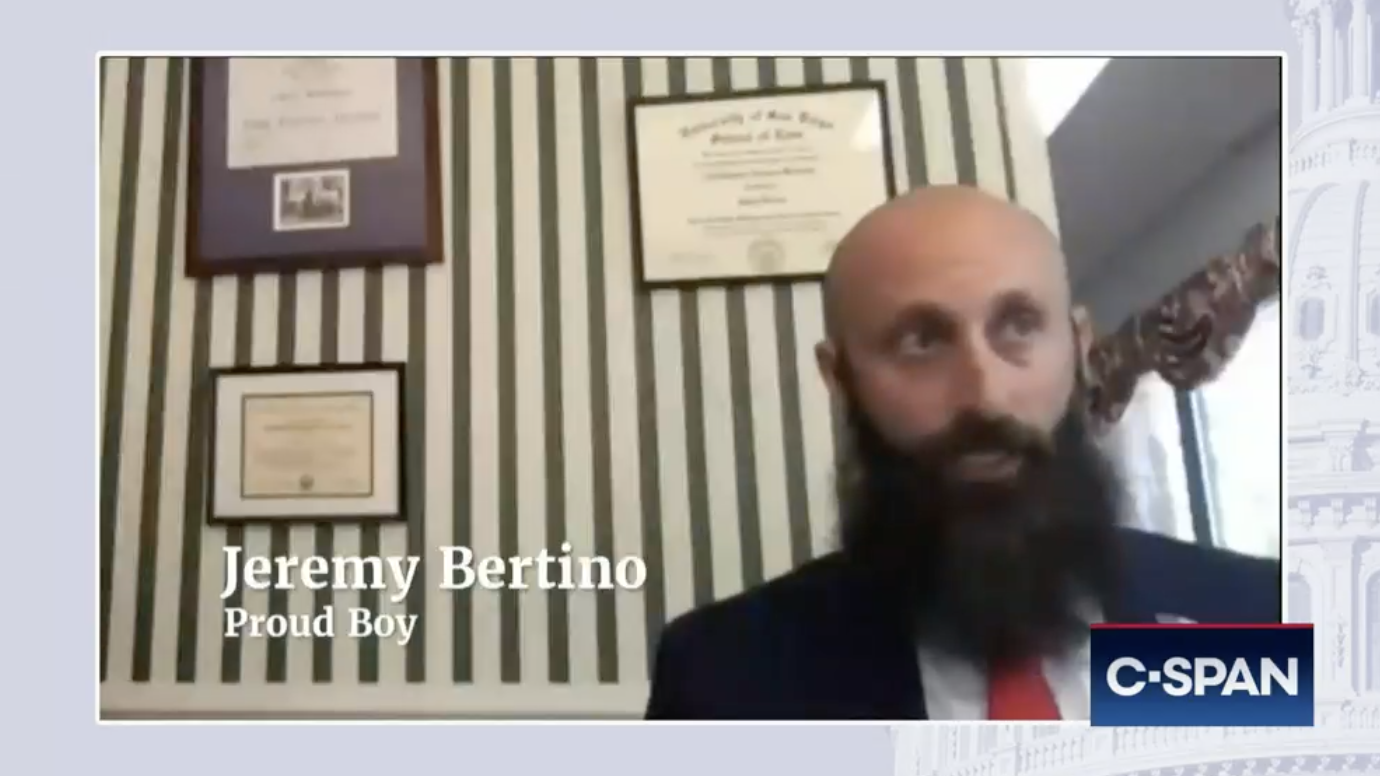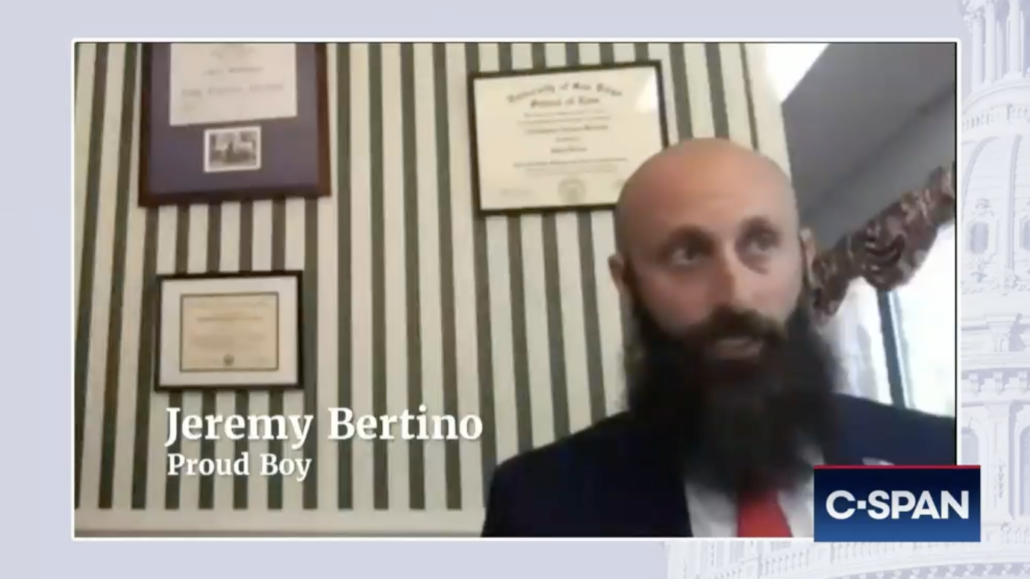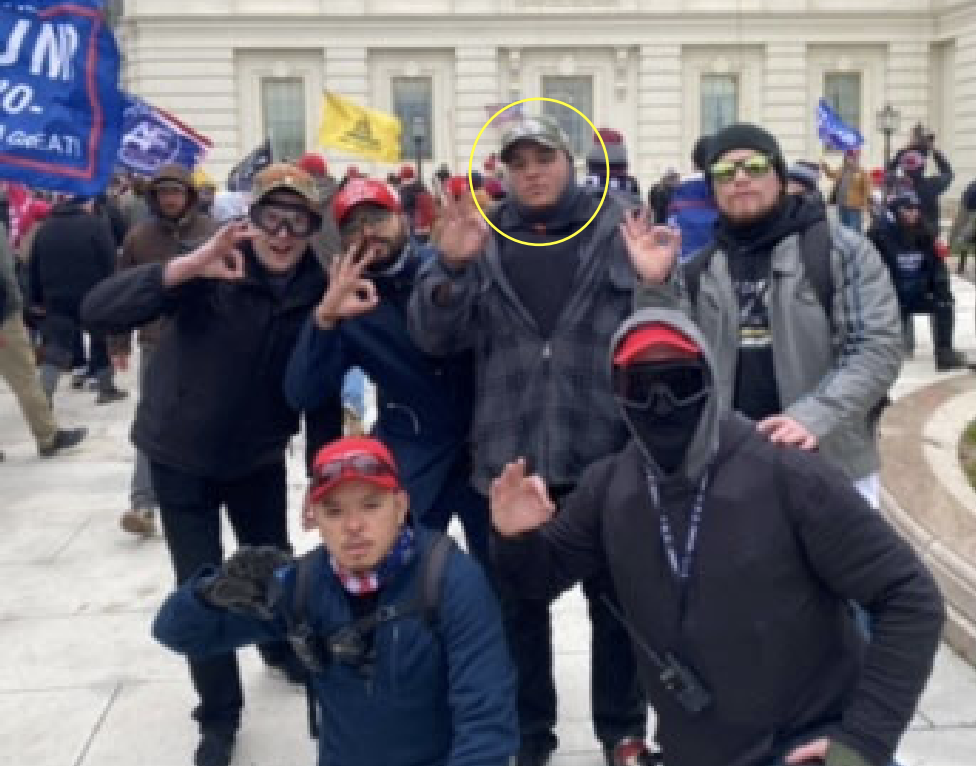Since at least August 2021, I have emphasized the import of the Proud Boys conspiracy because of the way Joe Biggs (and, I’d add, Enrique Tarrio) served as a nexus between the attack on the Capitol and the people who orchestrated the attack on the Capitol.
Because of Joe Biggs’ role at the nexus between the mob that attacked Congress and those that orchestrated the mob, his prosecution is the most important case in the entire January 6 investigation. If you prosecute him and his alleged co-conspirators successfully, you might also succeed in holding those who incited the attack on the Capitol accountable. If you botch the Biggs prosecution, then all the most important people will go free.
The point was echoed by Tarrio in a Gateway Pundit appearance after closing arguments, in which he called himself, “the next stepping stone.” And in a comment during closing arguments for which prosecutors got a curative instruction, Norm Pattis (the lawyer Biggs shares with Alex Jones) said, “this case will have impact on [the government’s] charging decisions in other cases.”
This post will explain how the Proud Boys seditious conspiracy verdict might network out, to other Proud Boys, in the weeks ahead. A follow-up will explain how it might network up.
The split verdict
Yesterday, a jury found Biggs and Tarrio guilty of all charges against them save two assaults charged under a co-conspirator liability theory: the one Dominic Pezzola committed in stealing the riot shield that he would then use to make the first breach of the building, and the one for throwing a water bottle for which Charles Donohoe, whose absence from the trial seems to have befuddled the jury, already pled guilty.
The sedition verdicts against Biggs, Tarrio, Ethan Nordean and Zach Rehl are the showy news result, but Pezzola’s fate may prove just as instructive for what this verdict means for others. In addition to charges for assaulting that cop, robbing his shield, and breaking the window, Pezzola was found guilty of obstructing the vote certification, but not conspiring with the others to do that (on which the jury hung) or to seditiously attack the government (on which the jury came back with a not guilty verdict).
Pezzola was found guilty of conspiring with the others to impede either cops or members of Congress from doing their duty, a conspiracy that carries a six year sentence rather than the twenty year max sentences the two other conspiracies carry. The government used that 18 USC 372 charge in this case and in the Oath Keepers’ case. As I’ve noted, it was only otherwise used to charge the men who attacked Brian Sicknick, though the conspiracy charge was ultimately dropped in guilty pleas. Using a slightly different description of the object of the conspiracy, all four members of the second Oath Keeper sedition group were found guilty of it (but then, they were found guilty of pretty much everything), three members of Rhodes sedition group were convicted of it (but not Rhodes or Thomas Caldwell), and four of six defendants in the lesser Oath Keeper conspiracy were convicted of it.
The Pezzola verdict may reflect his own testimony: He took the stand and claimed credit for his own assault, which he said had nothing to do with the other defendants, but tried to claim self-defense. (Here’s Brandi’s post on his testimony.) The jury seems to have believed that he had not agreed to enter into the two conspiracies — sedition and obstruction — that largely took form on Telegram threads he was not yet on, but their 372 verdict suggests they found he did agree on the day of the attack to work with the Proud Boys to chase Congress away from their job. I suspect that outcome may have relied on his willingness to take the stand.
In this split verdict, Pezzola’s outcome is pretty similar to that of Oath Keeper Kenneth Harrelson, who was convicted of the 372 conspiracy but not the sedition or obstruction conspiracies. Like Pezzola, he was convicted of obstruction individually.
In other words, most members of both militias were found guilty, not just of obstructing the vote certification, but of doing things to chase Congress out of their chambers, thereby preventing from doing their job. On that latter act — impeding Congress from doing their job — four separate juries have found more evidence to support a conspiracy than on obstruction.
The government may use these collective results to — as Tarrio and Pattis predicted — make further prosecutorial decisions.
The Proud Boy tools
As Brandi and I have both explained, prosecutors won a guilty verdict in this case by arguing that the Proud Boy leaders used others as “tools” of their conspiracy.
In response to a series of rulings, the theory evolved into a co-conspirator liability, with each “tool” presented at trial first premised — as Tim Kelly described in an order he released just before the initial verdict — on the government’s proffer of their involvement based on some combination of a prior tie to the Proud Boys, participation on the chats in advance, and marching with the Proud Boys from the start on January 6. Judge Kelly did exclude some of the people the government had asked to include, marked by cross-outs below:
William Pepe; Christopher Worrell; Barry Ramey; Daniel Lyons Scott; Trevor McDonald; Marc Bru; Gilbert Fonticoba; Ronald Loehrke and James Haffner; Nicholas Ochs; Gabriel Garcia; Paul Rae; Barton Shively; a group that included A.J. Fischer, Dion Rajewski, Zach Johnson, Brian Boele, and James Brett; and another group that included Arthur Jackman, Nate and Kevin Tuck, and Eddie George.
But for the rest, Kelly issued a ruling finding the men participated in the attack launched on the Capitol as Proud Boys. It’s an important ruling not just because it helped prosecutors to prove the Proud Boy Leaders used force even without, themselves, having assaulted anyone, but because it used participation in the Proud Boys attack as an element of conspiracy in a way that does not depend on First Amendment protected membership in the militia. They were found to be tools of this conspiracy not because they were Proud Boys, but because of things they did as Proud Boys.
It is probably not a coincidence that the cases against many of these men have been languishing as prosecutors focused on the Leader conspiracy. The current status of the prosecution of those Kelly did include is as follows:
Nicholas Ochs (who did not march with the Proud Boys on January 6): Currently serving a four-year sentence for obstruction.
Dan Scott: Awaiting sentencing on obstruction and assault charges.
Christopher Worrell: Bench Trial for obstruction, civil disorder, and assault paused; due to resume May 11.
Gabriel Garcia: After Garcia got caught hob-nobbing with Matt Gaetz and Ivan Raiklin in violation of pretrial release, his then lawyer parted ways with him. He is scheduled to face trial on obstruction, civil disorder, and trespassing charges in August.
William Pepe: Currently the sole remaining defendant on a conspiracy, obstruction, and civil disorder indictment in which Pezzola and cooperating witness Matthew Greene were originally charged. His attorney, William Shipley, is trying to delay trial until the fall; he has a status conference before Judge Kelly today. Update: They extended this case to July 11 today.
Trevor McDonald: Trevor McDonald has not been publicly charged.
Marc Bru: Bru is scheduled for a Bench Trial on obstruction and civil disorder charges in July.
Gilbert Fonticoba: Fonticoba faces trial on obstruction and civil disorder charges in October.
Ronald Loehrke and James Haffner: Loehrke and Haffner remain charged by complaint, facing civil disorder and trespass charges, with an assault charge against Haffner. They have a status hearing scheduled May 9.
Paul Rae, Arthur Jackman, Nate and Kevin Tuck, and Eddie George: Joe Biggs’ co-travelers currently face charges including obstruction and — for some — civil disorder, assault, and theft. This case has been dawdling over conflict proceedings involving John Pierce. Two long-term loaner AUSAs, Christopher Veatch and Nadia Moore (the latter of whom delivered the rebuttal argument in the Proud Boy leader trial), dropped off the case after closing arguments in the Proud Boy Leaders trial, perhaps freeing them to return to their homes after two years of work. This case is bound to take on new form in the status hearing before Tim Kelly scheduled today. Update: In the status conference, they continued this case to July 11. This morning, Proud Boy Leader prosecutor Jason McCullough filed his appearance.
AJ Fischer and Zach Johnson: Fischer and Johnson are charged along with non-Proud Boys who were part of the Tunnel assault with civil disorder and, for the two Proud Boys, assault. The indictment was charged under the Major Conspiracy section and may reflect cooperation between militias. The defendants have a July status hearing. As she did in the Biggs co-traveler case, Moore dropped off this case after delivering closing arguments.
For all the named “tools,” a judge has found that they followed Biggs and Nordean on the day of the attack. Like Pezzola, it would not be a stretch to argue they entered into a conspiracy to impede the cops and members of Congress. For all but Ochs, Scott, and Worrell, the government could supersede the charges against the men to incorporate evidence presented in the Proud Boy Leaders trial.
Two other Proud Boy groups may be affected by this trial.
Rehl’s co-travelers: Three of the guys that Rehl recruited to join the Proud Boys on January 6 were charged in December 2021: Isaiah Giddings, Brian Healion, and Freedom Vy. Giddings pled guilty to the more serious trespassing charge in January, but his statement of offense was somewhat discredited by belatedly-discovered evidence presented at trial that Rehl had not just wanted to get a can of pepper spray to use on cops on January 6, but had done so. Healion and Vy are still awaiting indictment. Rehl’s testimony at trial — particularly the evidence that he may have assaulted a cop — may make it easier to charge them with felonies.
The KC cell: Like many other Proud Boy cases, the prosecution of the Kansas City cell — one of the few others charged as conspiracy from the start — has been languishing during the Proud Boy leaders trial, even in spite of the fact that there is a cooperating witness, Enrique Colon, and one who proffered but was unwilling to testify against his co-conspirators, Ryan Ashlock. There’s a likely additional reason this case has languished, to say nothing of the fact that prosecutors didn’t include this cell — not even cell leader Billy Chrestman — in their tools theory: the participation of an FBI informant, who testified under the name “Ehren,” in their cell, setting up the possibility that those defendants could claim their actions were incited by the government. More than any other set of Proud Boy defendants, however, the Leader trial likely harmed this group, because during “Ehren’s” testimony, he made it clear that he did what he did that day — including helping to prevent the police from closing the gates to the tunnels — of his own accord. Here’s how Brandi described it:
Following suboptimal testimony from Tarrio’s witnesses this week, defendant Ethan Nordean squeezed in witness testimony from an FBI confidential human source and Proud Boy who appeared in court using only his middle name, “Ehren.”
Unfortunately for the defense, “Ehren,” testified under cross-examination that he was not at the Capitol on Jan. 6 as an FBI informant in any meaningful sense. He was there, he affirmed, as a member of the Proud Boys. Though the spelling of his name was not reported into the record, “Ehren” would appear to be the individual that Jan. 6 internet sleuths have identified as “TrackSuitPB.”
In video footage, jurors could see how “Ehren” entered the Capitol carrying zip tie cuffs he said he acquired incidentally as a memento of sorts. At another point, he appears in capitol CCTV footage flanked by Kansas City Proud Boys like William “Billy” Chrestman, Chris Kuehne, and others, as he helps place a podium under an interior electric gate to keep it from closing while others set chairs in the way. Police are seen working over and over to drop the barrier as rioters advanced.
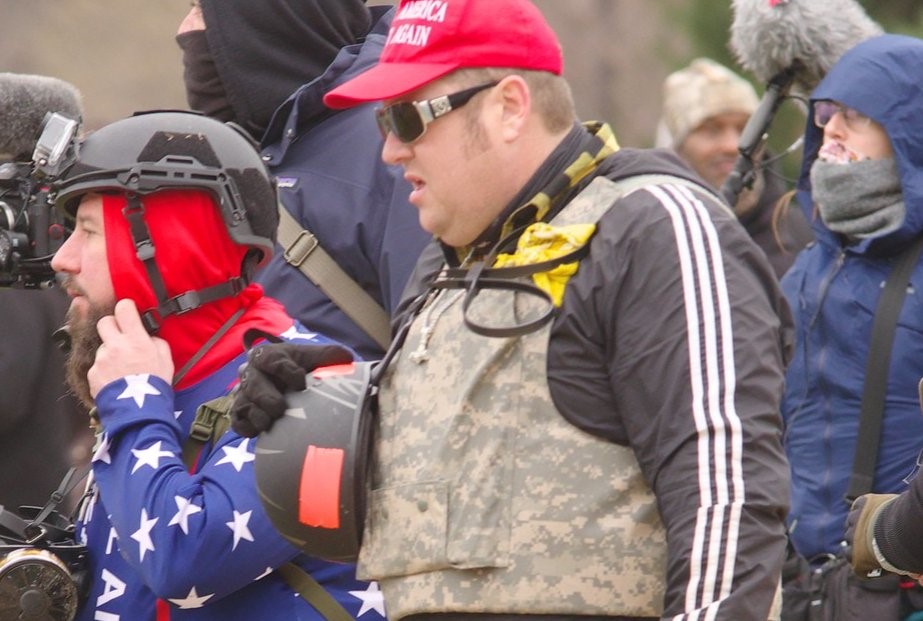
Poking holes in the defense’s direct and indirect suggestions over these many weeks of trial that the FBI was responsible for guiding the violence of Jan. 6, “Ehren” admitted he wasn’t instructed by the bureau to obstruct the gate. Or enter the Capitol. Or impede police. In hindsight, he admitted, he shouldn’t have helped prop open gates police were trying to lower at all.
While he testified, evidence was also presented to strongly support the government’s claim that he was playing up the “informing” he offered to the FBI.
“Ehren” texted his handler on Jan. 6 at 1:02 p.m. ET just as barriers were overrun: “Pb did not do it, nor inspire. The crowd did as a herd mentality. Not organized. Barriers down at capital [sic] building crowd surged forward, almost to the building now.”
During his interviews with the FBI in the summer of 2021, he claimed he was standing 100 people back from the front of the first breach. In court, however, footage showed him more like 20 or 30 people back. He was also close to defendant Zachary Rehl at one point as Rehl filmed from the fore of the crowd.
Note that Ethan Nordean’s attorney, Nick Smith, called Ehren to give this fairly counterproductive testimony. Smith also represents two of the defendants in the KC Cell, siblings Corey and Felicia. They have a status hearing scheduled before Tim Kelly on May 16. As he did on the Biggs’ co-traveler case, Veatch dropped off this case after the Leaders closing arguments.
Altogether, there are 19 people already charged (the 17 tools less Ochs, Scott, Worrell, and McDonald, plus two Rehl co-travelers and the four remaining KC defendants), plus McDonald and a few others otherwise treated as co-conspirators, who might face superseding charges or — at the very least — a more damning set of evidence based on trial testimony presented at the Proud Boy Leader case. Prosecutors may take the Pezzola verdict as a gauge of what a jury will find convincing, including that the larger Proud Boys group conspired to impede the police and Congress on January 6. That may not only expose some of these defendants to one or more additional felonies, but lay out how a networked conspiracy worked to assault the Capitol on January 6.
Update: According to this Vice News interview with one of the jurors, one reason they didn’t convict Pezz on sedition is bc he “may not have been bright enough to really know about the plan.”
Dominic Pezzola, “Spazzo”, was acquitted on seditious conspiracy. What was the difference there? Why was he acquitted when the others were found guilty?
Well, he wasn’t in leadership for one. And he only joined the Proud Boys in November or December of 2020. So he didn’t have a whole lot of time before Jan. 6. They have the different tiers you know, level 1 to level 4. Spazz was a 2 or 3 and on a fast track because he was so expressive of being a bad boy. We actually deadlocked on Spazz at first. But we got through that and said not guilty. Another factor was just that he wasn’t the brightest bulb on the porch. And may not have been bright enough to really know about the plan. So I said, well, poor guy. He should’ve listened to his father-in-law, who told him “don’t go.”
The juror’s testimony about the demeanor of Pezzola and Rehl in their testimony closely matches what Brandi found.

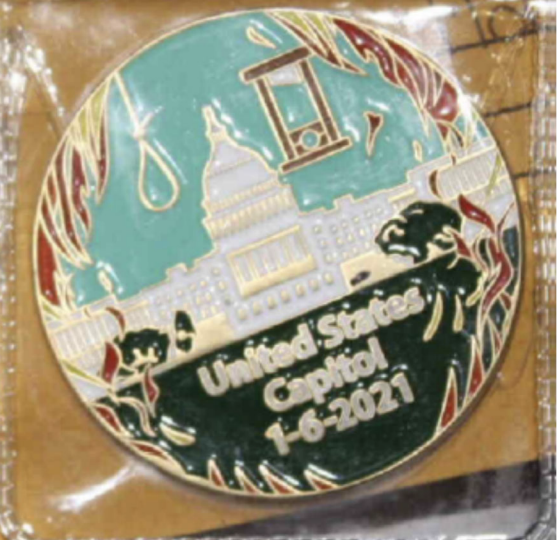
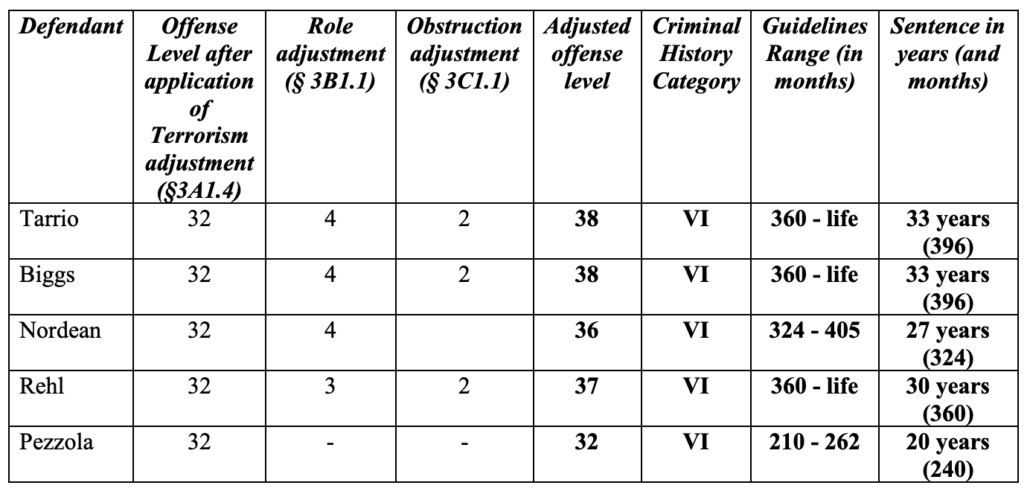
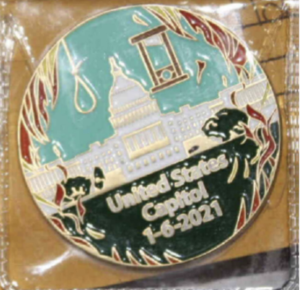


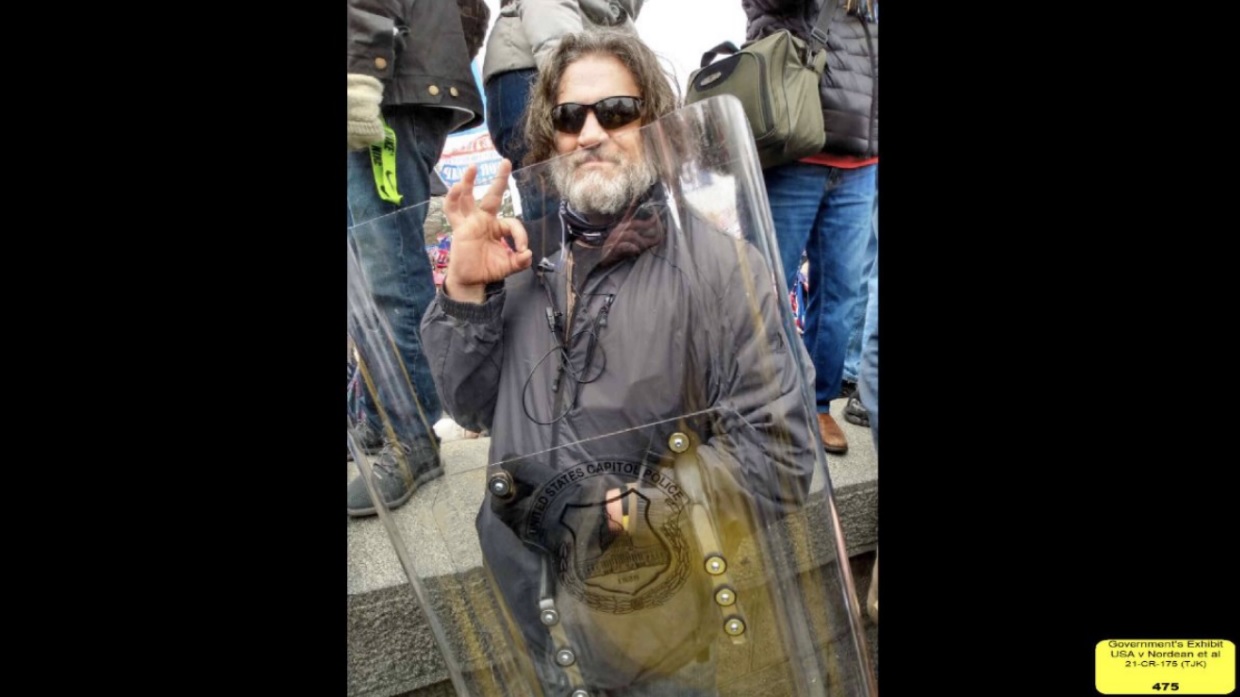
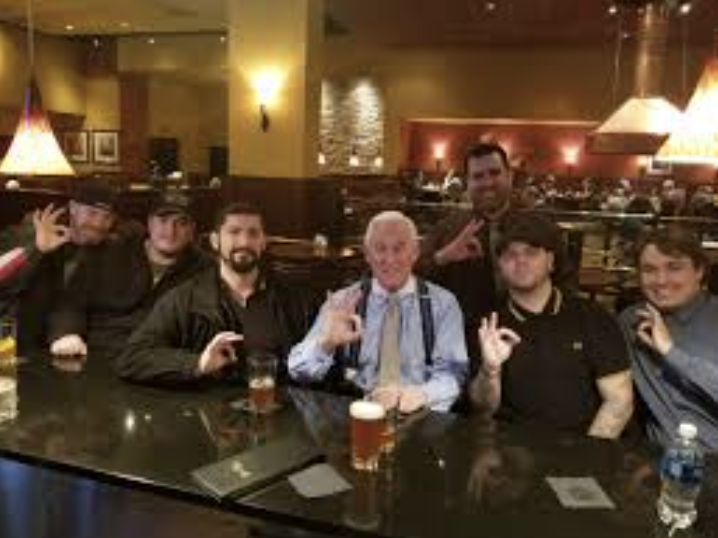
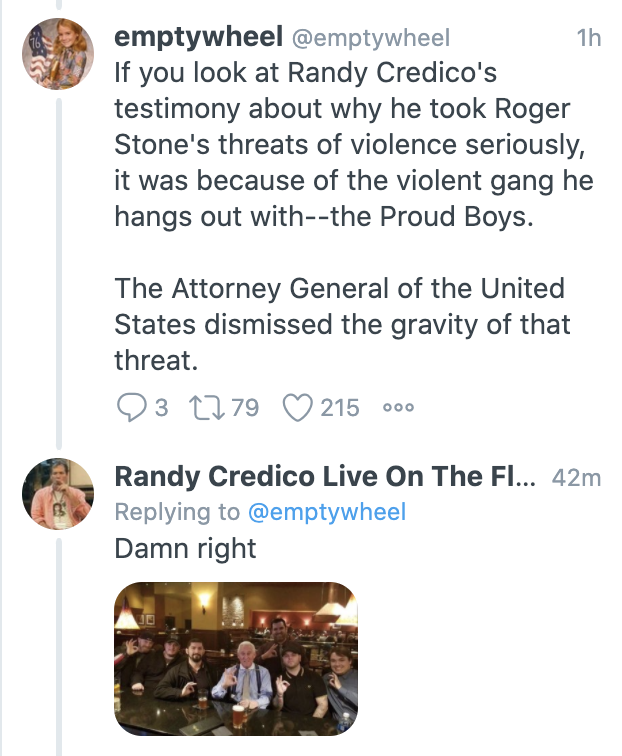

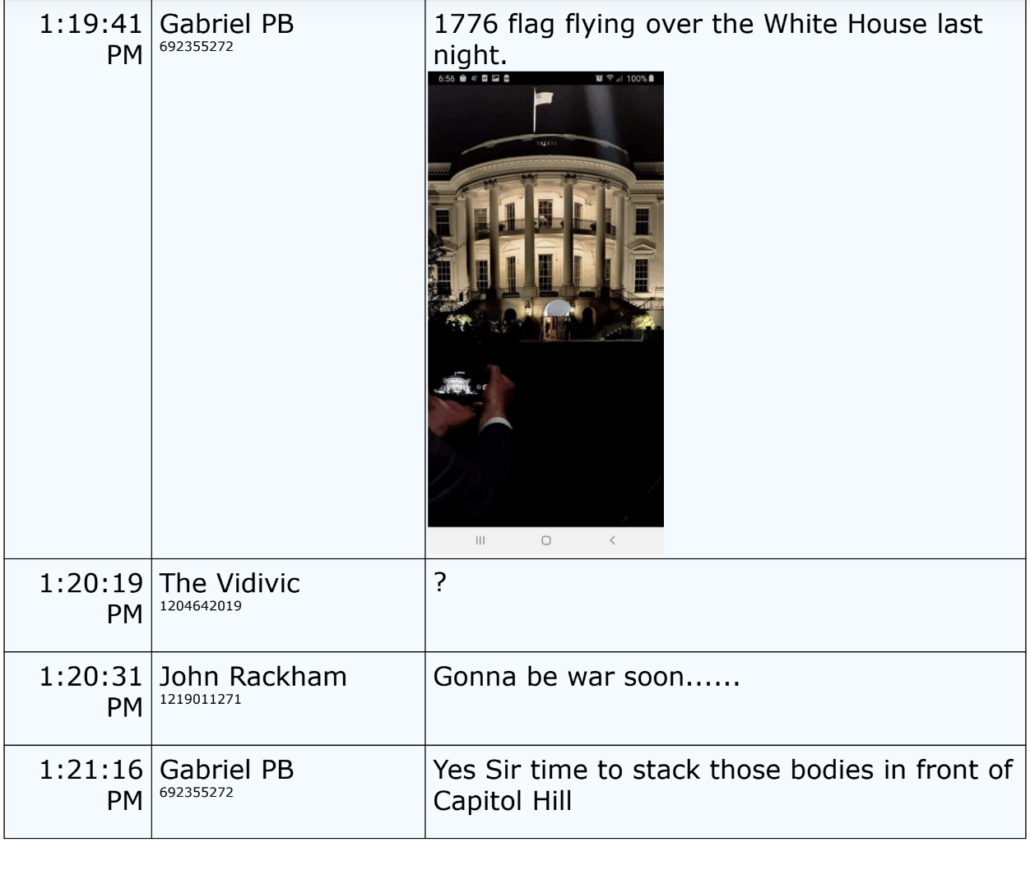
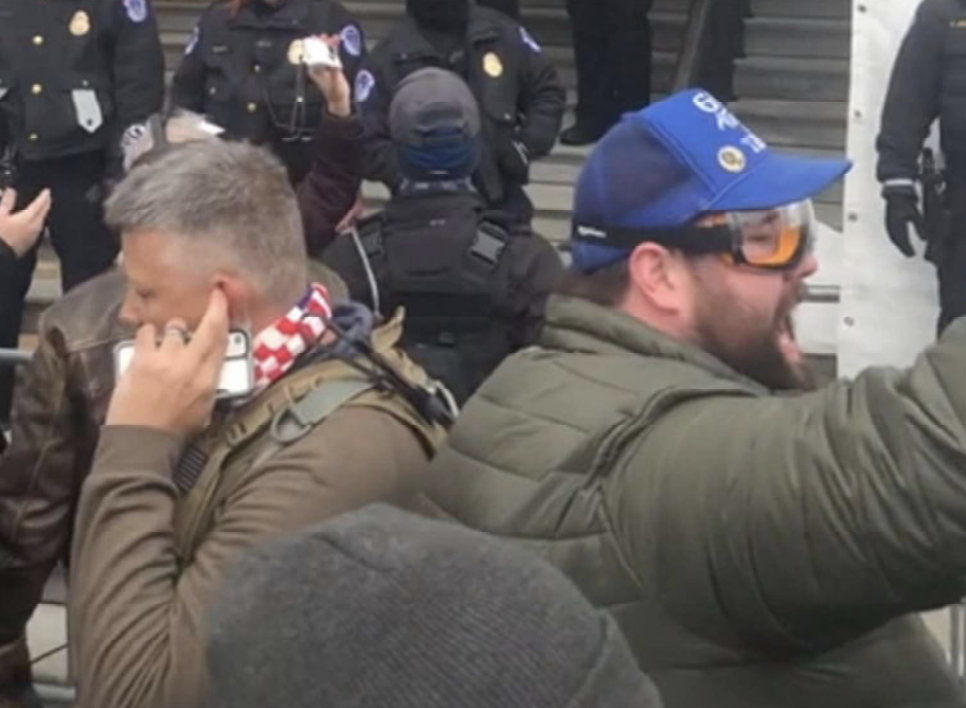
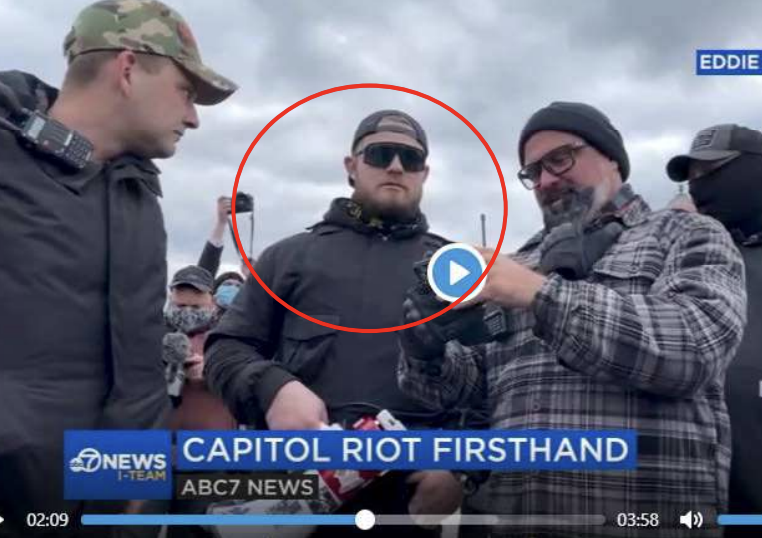

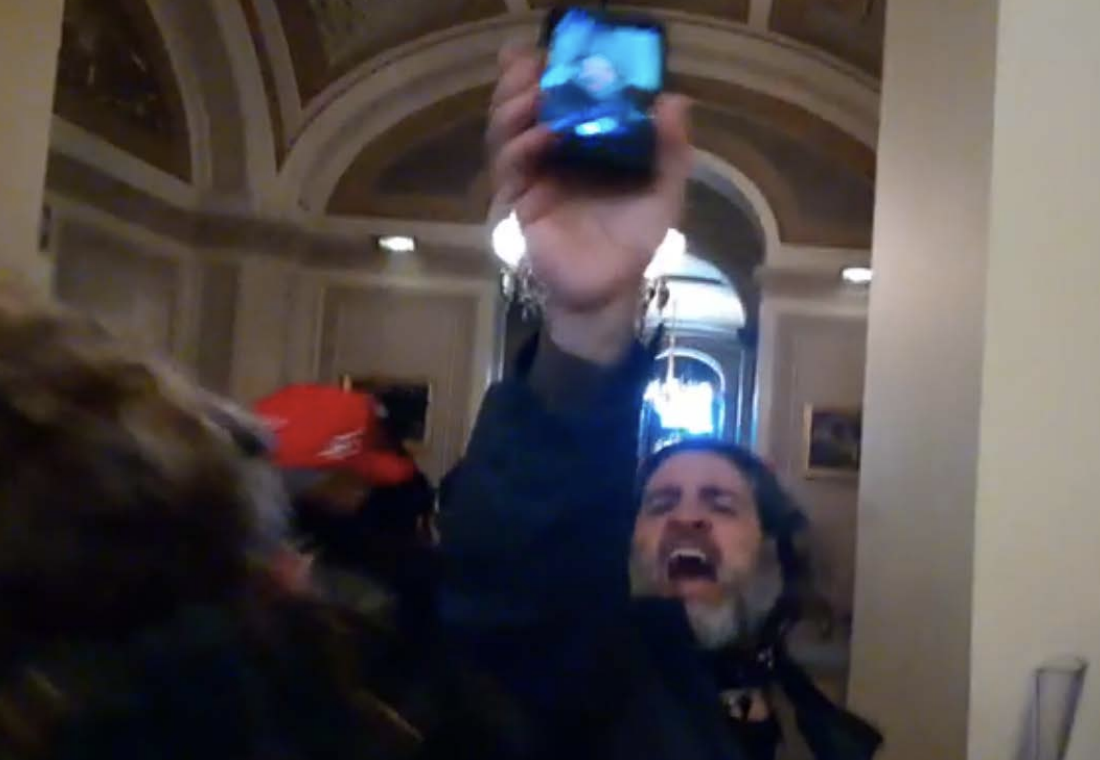 Pezzola
Pezzola